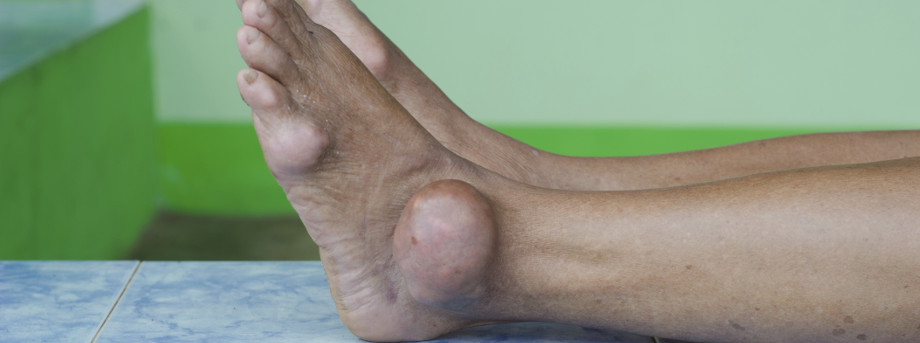The University of Nottingham
 Exchange online
Exchange online
Research Exchange
Gout sufferers are missing out on recommended treatment

December 23 2014
Only a minority of gout sufferers in England receive the recommended treatment to cure their condition, according to a new study.
In a study published today in the December issue of JAMA, academics from The University of Nottingham have found that only one-third of eligible patients with gout receive the recommended treatment.
Gout is the most common inflammatory arthritis and its incidence and prevalence have increased in recent years. Current guidelines recommend a urate-lowering treatment for patients with more severe gout and those with accompanying conditions.
Eliminating the causes of gout
This type of treatment lowers uric acid levels sufficiently to eliminate the crystals that cause gout. However, after the first diagnosis, it remains unclear when such “curative” treatment is appropriate.
Dr Chang-Fu Kuo and his colleagues from The University of Nottingham investigated the timing of eligibility for, and prescription of urate-lowering treatment in people following their first diagnosis of gout in a large UK primary care database (the Clinical Practice Research Data-link).
Of 52,164 patients with gout, the average time to first treatment (such as multiple attacks, chronic kidney disease, diuretic use, presence of subcutaneous tophi), was five months and the increasing probability of fulfilling any indication was 44 per cent at the first time of presentation and 61 per cent at one year, 87 per cent at five years, and 94 per cent at 10 years following diagnosis. The cumulative probabilities for prescription at the same time points were 0 per cent, 17 per cent, 30 per cent, and 41 per cent.
The average prescription rate for urate-lowering treatment among practices was 32.5 percent. Examined patient and practice-level factors accounted for only one-fifth of the variance in prescriptions.
Treatment eligibility
Dr Chang-Fu Kuo from The University of Nottingham said: “Our study aimed to estimate the proportion of patients fulfilling eligibility criteria for urate-lowering treatment since the diagnosis of the disease. We found that 44 per cent of patients were already eligible at diagnosis and 61 per cent at one year, 87 per cent at five years, and 94 per cent at 10 years after diagnosis. Therefore the majority of patients are eligible at or shortly following diagnosis. However, only one-third of eligible patients received such potentially curative treatment.
“This suboptimal treatment occurs for many reasons, including insufficient knowledge of the disease and its management, and misconceptions concerning its causes and its impact on patients quality of life and well-being. Our recommendation is to give full information to patients early in their clinical course at the time that they are first being informed about gout, its causes and the treatments that are available.
To view a copy of the report, visit — http://media.jamanetwork.com
Tags: Dr Chang-Fu Kuo, eliminate the crystals, gout, JAMA, lowers uric acid levels, missing out recommended treatment, potentially curative treatment, research, urate-lowering treatment
Leave a Reply
Other News

Top prize for quantum physicist
A University of Nottingham physicist has won a prestigious medal from the Institute of Physics for […]

Zero carbon HOUSE designed and built by students comes home
Design and construct a low cost, zero carbon, family starter home, transport it to Spain, build […]